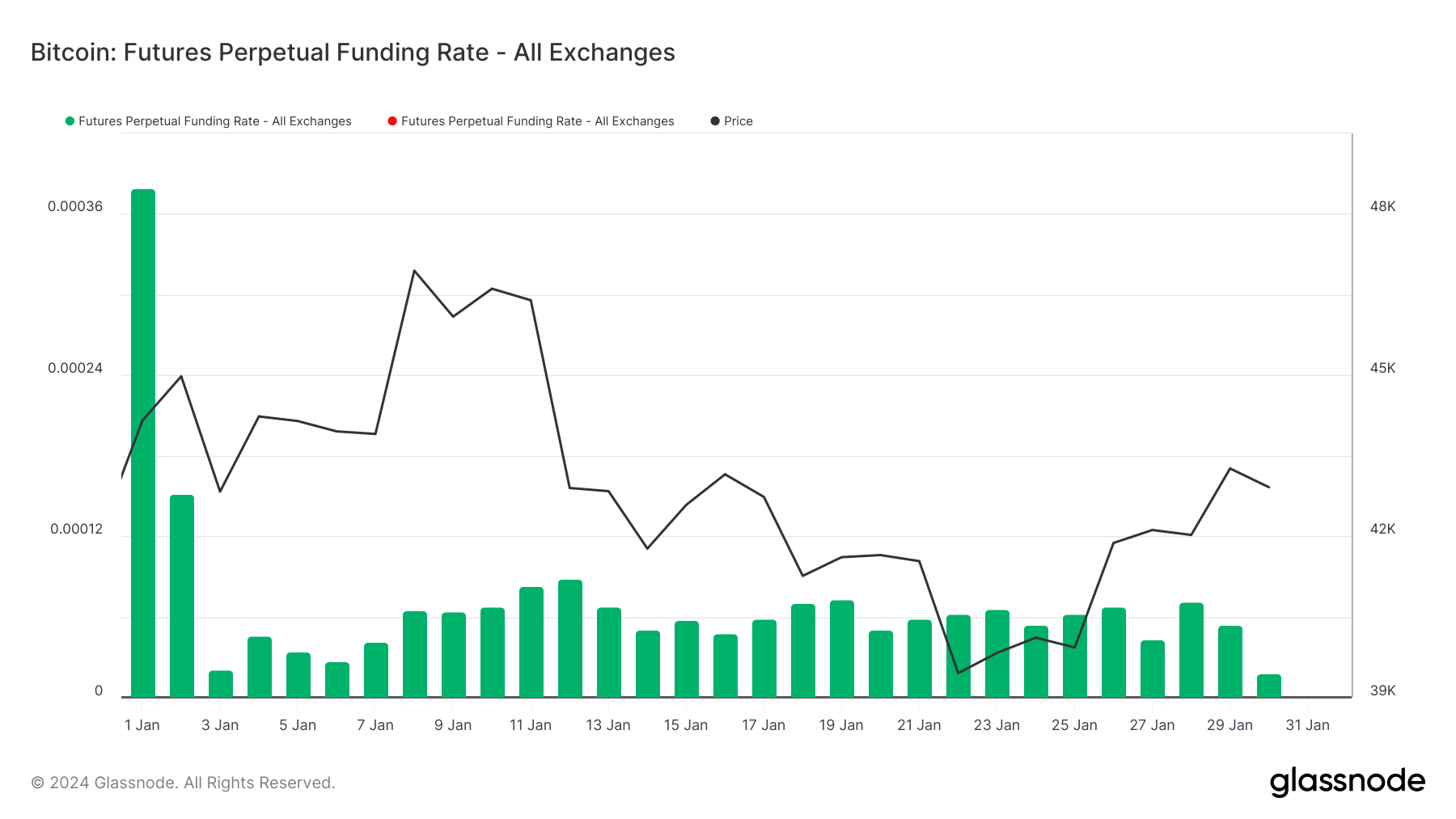January 2024 saw notable fluctuations in Bitcoin’s perpetual futures market, reflected in the funding rate, open interest (OI), and trading volumes. Perpetual futures, unlike traditional futures, do not have an expiration date, allowing traders to hold positions indefinitely. A critical aspect of these instruments is the perpetual futures funding rate, a mechanism designed to anchor the futures prices to the spot market. This rate can be positive or negative, depending on whether the market is bullish or bearish.
The beginning of the month saw a bullish trend, with Bitcoin’s price rising to $46,940 by January 8, aligning with a high funding rate of 0.0003790. This scenario indicated that traders were willing to pay a premium to hold long positions, anticipating further price increases.
However, as January progressed, the market experienced volatility, with Bitcoin’s price dropping to $39,450 by January 22 and then recovering to $43,260 on January 29. The funding rate mirrored these price movements, showcasing the fluctuating market sentiment. The most significant shift occurred towards the end of the month when the funding rate plummeted to 0.00001789 despite a relatively stable Bitcoin price. This sharp drop suggests a change in trader sentiment or strategy, possibly indicating a less bullish outlook.

This change in sentiment is also evident in the open interest and trading volumes for perpetual futures. The year-to-date (YTD) high in open interest was $10.771 billion on January 2, with trading volumes peaking at $73.783 billion on January 10, signaling strong market activity. This period of heightened activity correlates with the initial bullish sentiment in the Bitcoin market.
In contrast, the YTD low in open interest was recorded on January 23 at $9.165 billion, coinciding with the lowest trading volume of $6.718 billion. This decline indicates a significant pullback in market activity, potentially reflecting bearish sentiment or a reaction to external factors, such as the market’s correction during this period.
By January 30, the open interest had moderately recovered to $9.731 billion, with trading volumes at $25.721 billion. While this marks an improvement from mid-January lows, it still denotes a more cautious stance in the market.

The introduction of spot Bitcoin ETFs on January 10 likely played a role in this volatility. These ETFs offer investors a new way to gain exposure to Bitcoin, potentially attracting some away from perpetual futures. The shift towards ETFs could be attributed to their perceived lower risk and greater regulatory acceptance than futures, especially perpetual contracts.
The significant drop in the funding rate at the end of January, coupled with the changes in open interest and trading volumes, indicates a shift in market sentiment. Initially bullish, the market sentiment transitioned to a more cautious or bearish outlook by the month’s end. The introduction of spot Bitcoin ETFs likely influences this shift, as they provide a new avenue for Bitcoin exposure and might have diverted some interest from perpetual futures.
These developments suggest a varying risk appetite among traders and possibly a diversification of investment strategies.
The post Here’s why Bitcoin perpetual futures market saw high volatility in January appeared first on CryptoSlate.

Post a Comment